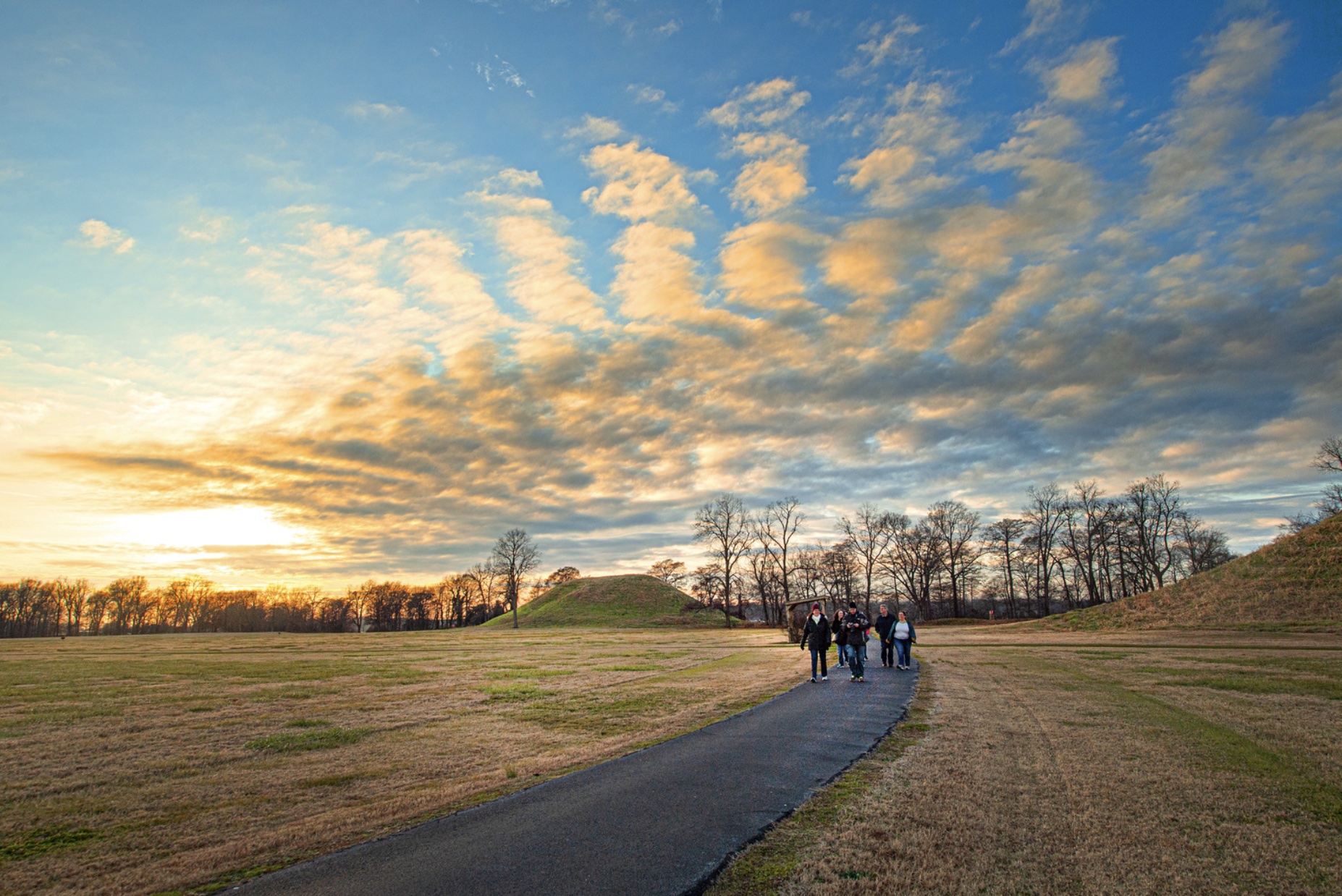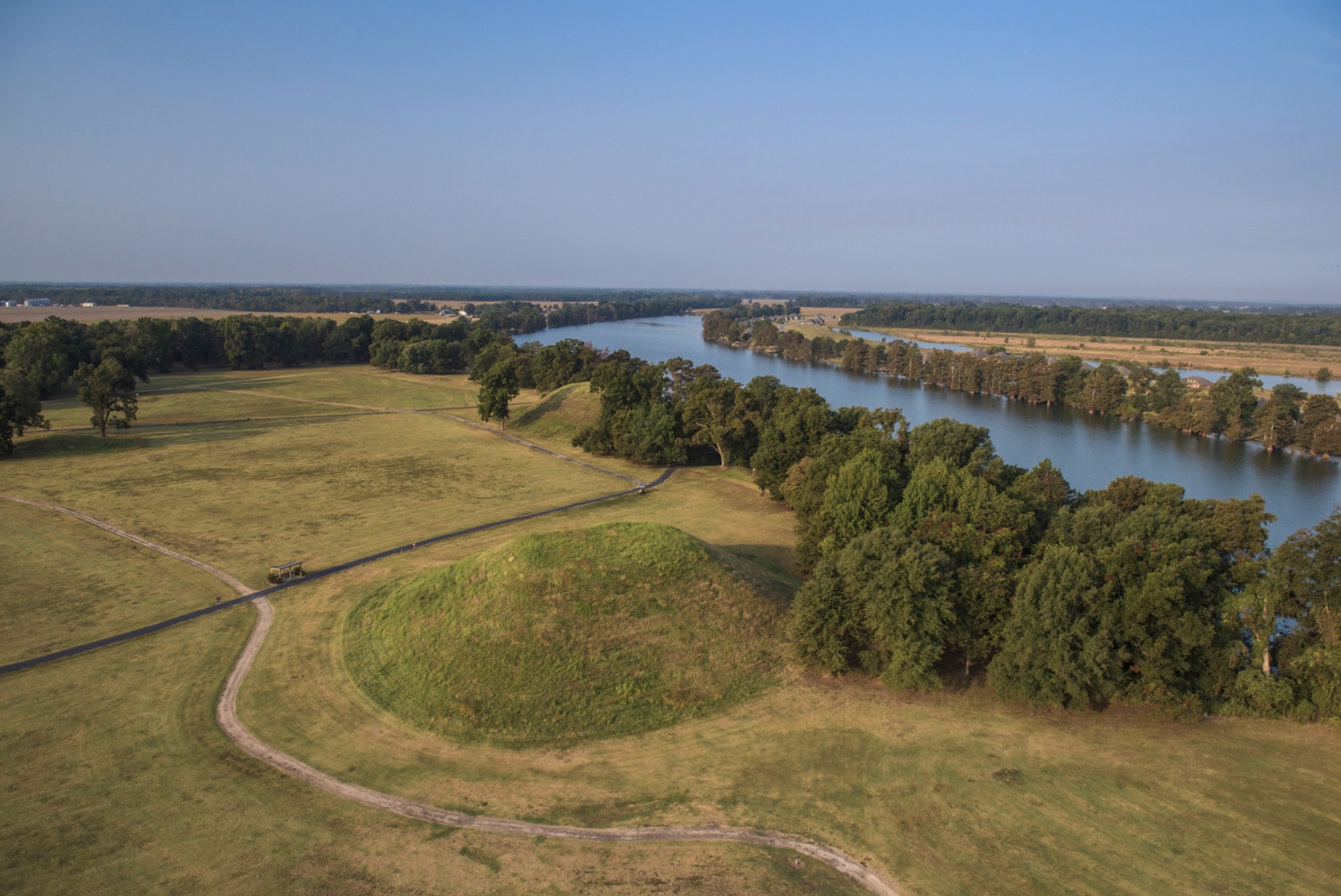Arkansas’ largest ceremonial mound site
Plum Bayou Mounds Archeological State Park, formerly Toltec Mounds Archeological State Park, is an interesting place to learn about Native American culture and the largest remaining ceremonial mound site in Arkansas.
“This is a prehistoric Native American mound park that was inhabited between 650 to 1050 A.D.,” said Amy Griffin, park interpreter at Plum Bayou Mounds Archeological State Park.

The people who inhabited the site were called the Plum Bayou people. “We have given them that name because we don’t know what they called themselves since they are a prehistoric group,” said Griffin. “The name Plum Bayou is from the local bayou. So we borrowed that to name these people. “
The people who inhabited the site were mound builders and we have discovered that they built 18 mounds total. They also built a wall around the mounds. “We believe this is a large ceremonial site that some people would live in year-round,” said Griffin. “But most people would come from miles around, do their ceremony and then leave. It is kind of like today. People will gather together for special occasions, eat, play games, have music and then depart.”

What makes this state park, which is located a few miles from Scott and around 20 miles from Little Rock, stand out is that it is a prehistoric Native American mound park. The park also has the tallest mound in Arkansas, known as Mound A. It is around 49.5 feet tall, making it almost as tall as a five story building.
Three mounds remain of the 18 that were once at the site. The mounds are located at precise measurements from each other and were used as an earthen calendar by this culture. The changing position of the sun on the horizon is marked by the mounds, which helped keep track of planting and ceremonial schedules. The park holds annual solstice and equinox celebrations that visitors can attend. The only time visitors are allowed on a mound location is during guided sunset tours given at these celebrations. Otherwise, visitors are not allowed off the trails to avoid potential damage to the archeological site and out of respect to the tribes and nations who still use this ceremonial place.
Arkansas has 52 state parks and Plum Bayou Mounds Archeological State Park, which is also a National Historic Landmark, is one of three Native American parks in the state park system. Parkin Archeological State Park is a mound park and Hampson Archeological Museum State Park has artifacts from a mounds site.
People are usually curious to know if there are burial mounds at the site. There is one burial mound and the rest are ceremonial. The tall flat top mounds are platform mounds.
The state park partners with the Arkansas Archeological Survey and labs in the park’s visitor center are staffed by archeologists. They help park staff understand different aspects of archeology and how to relay questions about it to the public.
Some items that archaeologists have found on the site are not from there, perhaps because the people were trading and/or traveling to get those particular materials. Some examples of these items include shell from the Gulf of Mexico and copper from the Great Lakes region. Visitors can see some of the site’s artifact collection at a museum in the park’s visitor center. Griffin mentioned some of the artifacts she enjoys from the collection include quartz crystal arrowheads, potentially used for ceremonial purposes, a bone hair pin, and a stone and clay effigy head.
Along with artifacts, soil is also instrumental for archaeologists to study because it can help give further information about the site, such as how a mound was built. “The type of dirt that they bring in for the mounds is important,” said Griffin. “You can’t use sandy soil to build a mound, they had to use dense clay. Even when they excavate and come across an area where there are dark circles in the soil, like post molds. When a hut was built posts were put in the ground and it left an imprint where it used to be. So they [archeologists] can tell where structures used to be, like on top of Mound B. You can even tell where a large and intense fire was. Because when you have an intense fire on a ground that is mostly clay it is going to harden and turn the area black. There are many ways soils are very important. It was also used for pottery, in the way they used it and decorated it, which is important for ceremonies and different groups culturally."
There are two trails to explore the grounds and get a closer look at the mounds. Both take you near an oxbow lake known as Mound Lake. The Plum Bayou people potentially used this waterway to reach the ceremonial site via dugout canoes.
The park was formerly known as Toltec Mounds Archeological State Park. “It was this way for a long time because it was named Toltec in the 1800s,” said Griffin. Though the name used to be Toltec, the site was not associated with the Toltecs of Mexico. It is a mystery who these North American Indians were since no written records have been left behind. “Through looking at artifacts that archaeologists find here, we know this is a prehistoric southeastern North American group,” said Griffin. “Not the Toltec people of Central America.”
Last year the name of the park was officially changed to Plum Bayou Mounds Archeological State Park. “We changed the name to better reflect the people who were actually here,” said Griffin.
Plum Bayou Mounds Archeological State Park is located at 490 Toltec Mounds Road near Scott. While you are in Scott, there is another interesting state park you can visit to learn about Arkansas’ farming history: Plantation Agriculture Museum State Park. For more details about Plum Bayou Mounds Archeological State Park, visit arkansasstateparks.com/parks/plum-bayou-mounds-archeological-state-park.
